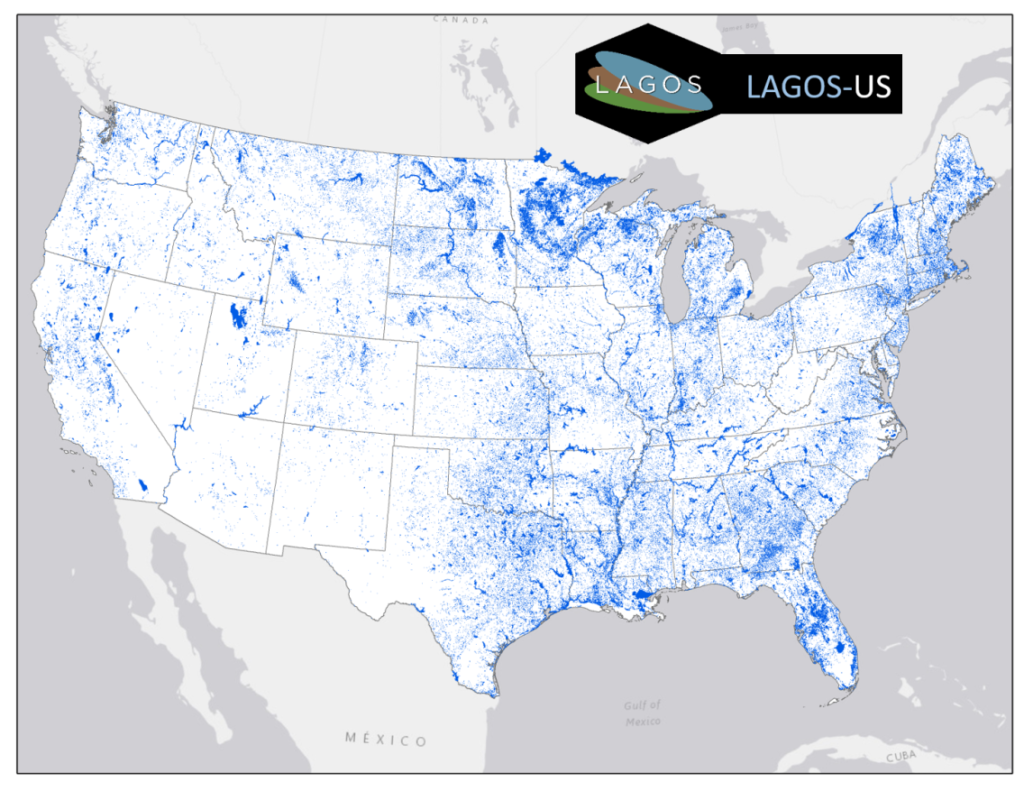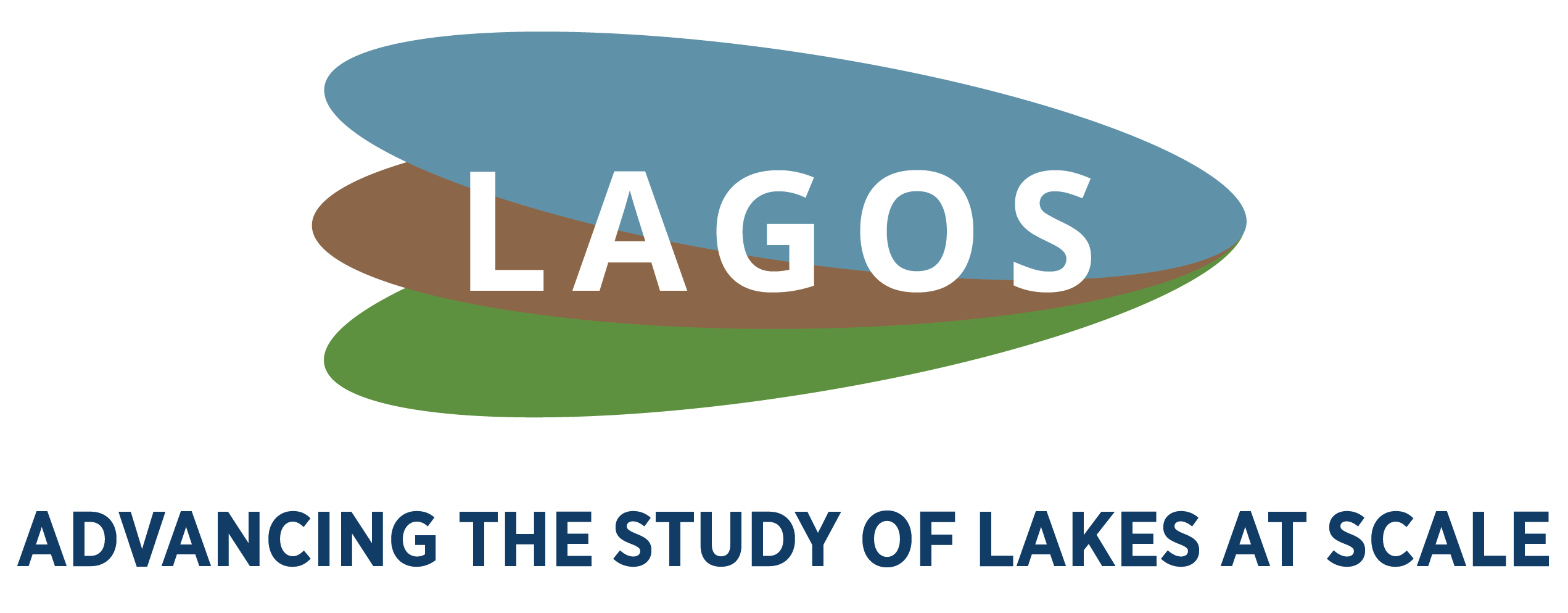LAGOS
ADVANCING THE STUDY OF LAKES AT SCALE
WHAT IS LAGOS

LAGOS is an open-access research platform that includes compiled and integrated data for 479,950 lakes in the conterminous U.S., advancing the study, understanding, and management of U.S. lakes at regional to continental scales.
The LAGOS data are interoperable with many other national and regional datasets and can be integrated through unique identifiers and geospatial layers.
Modules are documented with user guides, code, and documentation to enable data reuse and extension.
LAGOS FEATURES
In situ chemistry data points
Lake-watersheds with geographic characteristics
Lake depth records

HOW TO USE & BUILD ON LAGOS
LAGOS is designed to be a community resource in which anyone can add to it by creating new extension modules, or by updating existing models.
These efforts are made possible by the extensive documentation available for all LAGOS products that includes detailed methods, code, and other resources.
LAGOS LAKE STATS
What is the most common lake name?
Mud
What is the longest lake name?
(by total characters)
Clarence Cannon Memorial Watershed Structure Number 1 Reservoir (MT)
What is the longest lake name?
(by single word)
Chemquasabamticook Lake (ME)
What U.S. county has the highest lake density?
St. Louis, MN (2,382 lakes)
What is the deepest lake?
Crater Lake, OR
What is the biggest shallow lake?
(maximum depth ≤ 5m)
Lake Okeechobee, FL (129,612 ha)
Which lake has the record for longest water clarity?
Hubbard Creek Reservoir, TX (46-year Secchi record)
Which lake has the record for deepest water clarity?
(multi-year average)
Waldo Lake, OR (Secchi=32m)
State with the most in situ data records in LIMNO-US?
Minnesota (1,173,441 data records in total)
What is the largest lakes in the database?
Great Salt Lake, UT (338,950.2 ha)
What is the smallest lake in the database?
unnamed NH lake (1.000009 ha)
What is the lakes with the highest elevation?
Pacific Tarn, CO (4,095 m)
THANKS TO MANY DATA SOURCES AND PROVIDERS
The LAGOS platforms were created based on a foundation of open science principles. One of the more important of these was the willingness to share data, document it, and make it accessible.
We are indebted to the many people, agencies, and institutions who contributed data, tools, and/or their time, making LAGOS possible.
A complete list of these data sources by platform and module are listed here.
Video by Aric Shelby (pexels.com). Photo Credit: JDV.
